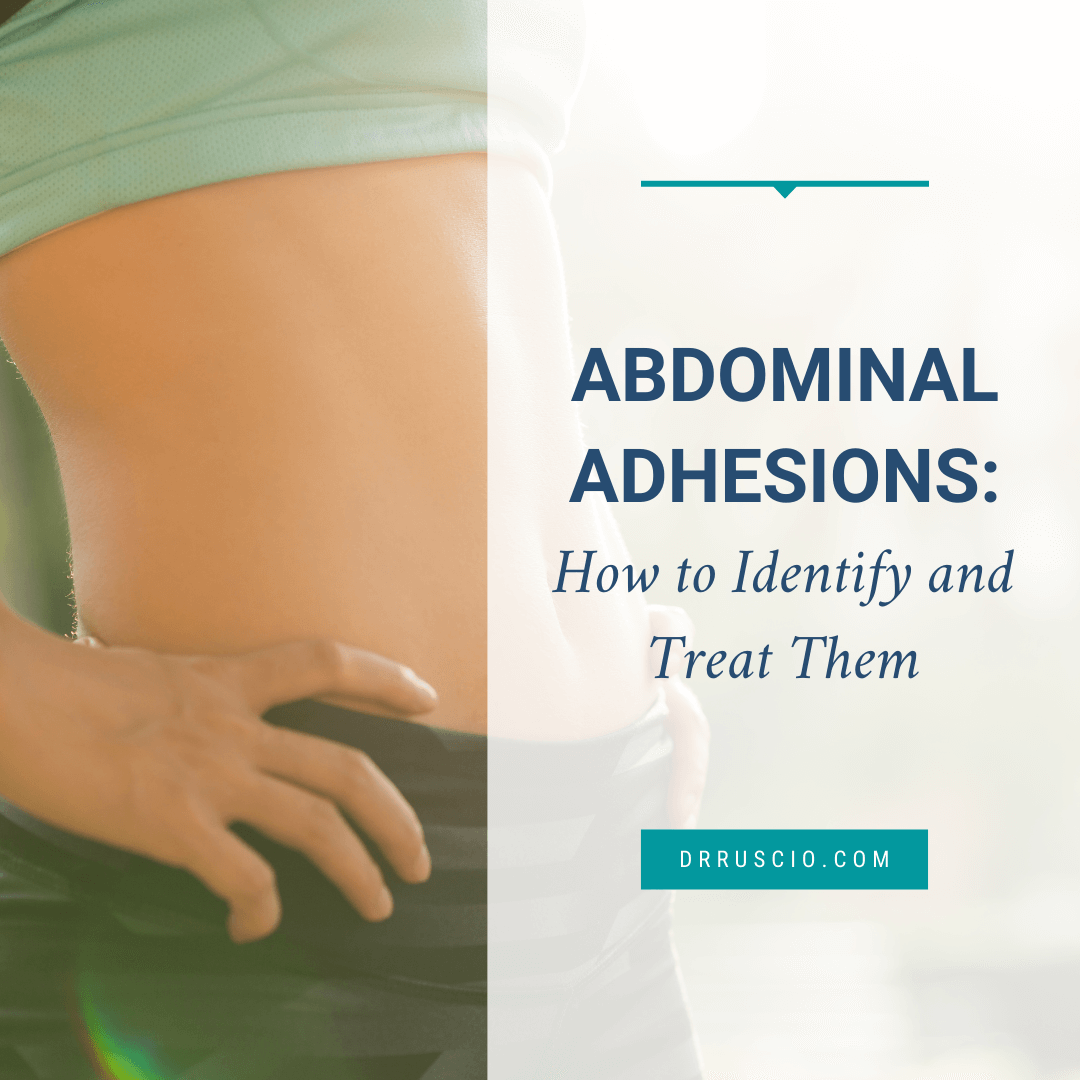Abdominal adhesions are scar-like strands that form between the tissues and organs within the abdomen. These strands can become so dense that they can cause organs to stick together and limit normal organ movement. Until recently, abdominal adhesions were treated with surgery, which carried a high risk of recurrence. Fortunately, today there is a new, less invasive alternative- endoscopic adhesiolysis. This procedure allows for more precise targeting of the affected area without the need for extensive surgery.

Table Of Content:
- Adhesions - Better Health Channel
- Manual Physical Therapy for Non-Surgical Treatment of Adhesion ...
- Abdominal Adhesions | NIDDK
- 4 Best Ways to Take Control of Abdominal Adhesions – Cleveland ...
- Adhesions, General and After Surgery
- Abdominal Adhesions: How to Identify and Treat Them
- Adhesions: Surgery's Hidden Killer
- Endometriosis Adhesions: Symptom Relief, Removal, and More
- Chronic pelvic pain in women - Diagnosis and treatment - Mayo Clinic
- How to Get Rid of Abdominal Adhesions: 5 Ways to Control It
1. Adhesions - Better Health Channel
https://www.betterhealth.vic.gov.au/health/conditionsandtreatments/adhesions
Non-surgical treatments for adhesions. Alternatives to surgery include: medication – this is often the first treatment ...
2. Manual Physical Therapy for Non-Surgical Treatment of Adhesion ...
https://www.ncbi.nlm.nih.gov/pmc/articles/PMC4470113/ It should be noted that surgery is not the only cause of adhesion formation ... lysis of adhesions may be a viable alternative to SBO surgical treatment.
It should be noted that surgery is not the only cause of adhesion formation ... lysis of adhesions may be a viable alternative to SBO surgical treatment.
3. Abdominal Adhesions | NIDDK
https://www.niddk.nih.gov/health-information/digestive-diseases/abdominal-adhesions If you do, surgeons will release the adhesions, relieving the intestinal obstruction. If you don't need emergency surgery, doctors may try to treat the ...
If you do, surgeons will release the adhesions, relieving the intestinal obstruction. If you don't need emergency surgery, doctors may try to treat the ...
4. 4 Best Ways to Take Control of Abdominal Adhesions – Cleveland ...
https://health.clevelandclinic.org/4-best-ways-to-take-control-of-abdominal-adhesions/ Mar 12, 2020 ... So, if you can't prevent an abdominal adhesion, ... “I advise my patients to ask about these alternatives and to request a referral if they ...
Mar 12, 2020 ... So, if you can't prevent an abdominal adhesion, ... “I advise my patients to ask about these alternatives and to request a referral if they ...
5. Adhesions, General and After Surgery
https://www.webmd.com/a-to-z-guides/adhesion-general-post-surgery Surgery. Two common surgical techniques used to treat abdominal adhesions are laparoscopy and laparotomy. With laparoscopy, a doctor ...
Surgery. Two common surgical techniques used to treat abdominal adhesions are laparoscopy and laparotomy. With laparoscopy, a doctor ...
6. Abdominal Adhesions: How to Identify and Treat Them
https://drruscio.com/abdominal-adhesions/ Feb 11, 2022 ... If you suspect abdominal adhesions as the source of your abdominal pain or SIBO, read on for a treatment guide, including natural options.
Feb 11, 2022 ... If you suspect abdominal adhesions as the source of your abdominal pain or SIBO, read on for a treatment guide, including natural options.
7. Adhesions: Surgery's Hidden Killer
https://www.globenewswire.com/en/news-release/2019/09/17/1916632/0/en/Adhesions-Surgery-s-Hidden-Killer.htmlSep 17, 2019 ... With costs surpassing six billion dollars a year, adhesion removal ... therapy to treat patients diagnosed with adhesions that cause bowel ...
8. Endometriosis Adhesions: Symptom Relief, Removal, and More
https://www.healthline.com/health/womens-health/endometriosis-adhesions ... methods of treatment, alternative treatments may be ... lifestyle changes may reduce endometriosis symptoms.
... methods of treatment, alternative treatments may be ... lifestyle changes may reduce endometriosis symptoms.
9. Chronic pelvic pain in women - Diagnosis and treatment - Mayo Clinic
https://www.mayoclinic.org/diseases-conditions/chronic-pelvic-pain/diagnosis-treatment/drc-20354371 Jul 17, 2021 ... If you have endometriosis, doctors can remove the adhesions or endometrial tissue using laparoscopic surgery. During laparoscopic surgery, your ...
Jul 17, 2021 ... If you have endometriosis, doctors can remove the adhesions or endometrial tissue using laparoscopic surgery. During laparoscopic surgery, your ...
10. How to Get Rid of Abdominal Adhesions: 5 Ways to Control It
https://www.claritysurgicalny.com/blog/5-best-ways-to-take-control-of-abdominal-adhesions Intestinal Adhesion Surgery in Long Island, NY. If there is no pain relief from abdominal adhesions after non-surgical treatment, it's best to consult a ...
Intestinal Adhesion Surgery in Long Island, NY. If there is no pain relief from abdominal adhesions after non-surgical treatment, it's best to consult a ...
What is endoscopic adhesiolysis?
Endoscopic adhesiolysis is a minimally-invasive technique used to treat abdominal adhesions caused by previous surgeries or abdominal trauma. It uses an endoscope to accurately place tools inside your abdomen and break apart the scar tissue while limiting damage to healthy tissue.
How safe is endoscopic adhesiolysis?
Endoscopic adhesion lysis has been found to be very safe for treating abdominal adhesions as the risks associated with this procedure are minimal when compared to traditional open surgery methods. Additionally, because it is minimally invasive it requires less recovery time than open surgery.
What are the benefits of endoscopic adhesion lysis?
Endoscopic adhesion lysis provides relief from symptoms associated with abdominal adhesions without the need for costly and time consuming open surgery procedures. Patients may experience increased comfort after undergoing this technique through reduced pain or discomfort in their abdomen as well as improved organ function and mobility due to removal of scar tissue.
Are there any risks associated with endoscopic adhesion lysis?
Although most patients have reported positive outcomes following endoscopic adhesion lysis, there is still some risk involved such as potential infection or bleeding at the site where instruments were inserted into your body. There is also a small chance that further treatments may be required if not all of the scar tissue was successfully removed during the initial procedure.
Is endoscopic adhesion lysis covered by insurance?
Endoscopic Adhesion Lysis may be covered by insurance depending on the individual’s policy and provider network; however, we recommend you contact your insurer prior to beginning treatment in order to understand your coverage options.
Conclusion:
Endoscopic Adhesion Lysis represents a great alternative for patients who wish to treat their abdominal adhesive disorder without invasive surgery. It offers enhanced precision while minimizing damage to surrounding healthy tissue and decreasing recovery times compared to traditional surgical treatments. If you think you might benefit from this procedure please contact your physician for further information and advice regarding eligibility.
